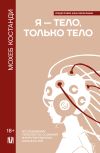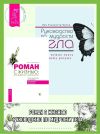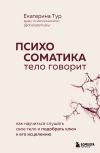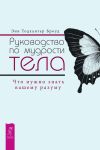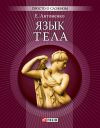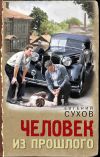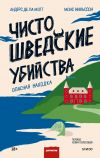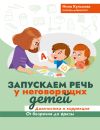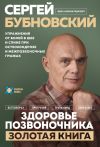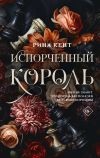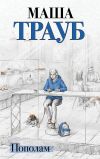Текст книги "Мудрость тела. Как обрести уверенность в себе, улучшить самочувствие и наконец-то получать удовольствие от жизни"
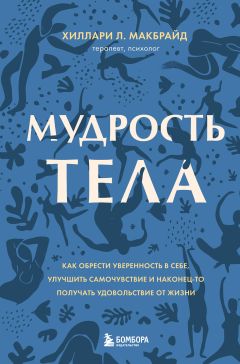
Автор книги: Хиллари Л. МакБрайд
Жанр: Личностный рост, Книги по психологии
Возрастные ограничения: +16
сообщить о неприемлемом содержимом
Текущая страница: 18 (всего у книги 19 страниц)
8. Gilligan, In a Different Voice, 24–63.
9. Mimi Nichter, Fat Talk: What Girls and Their Parents Say about Dieting (Cambridge, MA: Harvard University Press, 2000); and Lauren E. Britton et al., “Fat Talk and Self-Presentation of Body Image: Is There a Social Norm for Women to Self-Degrade?”, Body Image 3, no. 3 (2006): 247–54.
10. Бодипозитив – это общественное движение, возникшее в ответ на огромное количество негативных социокультурных сигналов о теле и внешности. Оно бросает вызов ограничивающим и вредным идеалам тела. Вместо того чтобы менять свое тело для формирования его позитивного образа, участники этого движения считают, что тело не должно меняться, чтобы образ тела был позитивным. Более широкие социальные установки о приемлемом теле (в том числе благодаря развитию самого движения бодипозитива) играют в этом очень важную роль.
11. Sonya Renee Taylor, The Body Is Not an Apology: The Power of Radical Self-Love (Oakland, CA: Barrett-Koehler, 2018), 4.
12. Debora Badoud and Manos Tsakiris, “From the Body’s Viscera to the Body’s Image: Is There a Link between Interoception and Body Image Concerns?”, Neuroscience and Biobehavioral Reviews 77 (June 2017): 237–46.
13. Rainer Schandry, “Heart Beat Perception and Emotional Experience”, Psychophysiology 18, no. 4 (July 1981): 483–88.
14. Barnaby B. Dunn, Tim Dalgleish, Andrew D. Lawrence, and Alan D. Ogilvie, “The Accuracy of Self-Monitoring and Its Relationship to Self-Focused Attention in Dysphoria and Clinical Depression”, Journal of Abnormal Psychology 116, no. 1 (February 2007): 1–15; Secondo Fassino, Andrea Pierò, Carla Gramaglia, and Giovanni Abbate-Daga, “Clinical, Psychopathological and Personality Correlates of Interoceptive Awareness in Anorexia Nervosa, Bulimia Nervosa and Obesity”, Psychopathology 37, no. 4 (July/August 2004): 168–74; Olga Pollatos and Eleana Georgiou, “Normal Interoceptive Accuracy in Women with Bulimia Nervosa”, Psychiatry Research 240 (June 2016): 328–32; Olga Pollatos, Anne-Lene Kurz, Jessica Albrecht, Tatjana Schreder, Anna Maria Kleemann, Veronika Schöpf, Rainer Kopietz, Martin Wiesmann, and Rainer Schandry, “Reduced Perception of Bodily Signals in Anorexia Nervosa”, Eating Behaviors 9, no. 4 (December 2008): 381–88.
15. Rachel F. Rodgers, Siân A. McLean, and Susan J. Paxton, “When Seeing Is Not Believing: An Examination of the Mechanisms Accounting for the Protective Effect of Media Literacy on Body Image”, Sex Roles 81, nos. 1–2 (2019): 87–96; Siân A. McLean, Susan J. Paxton, and Eleanor H. Wertheim, “Does Media Literacy Mitigate Risk for Reduced Body Satisfaction Following Exposure to ThinIdeal Media?”, Journal of Youth and Adolescence 45, no. 8 (2016): 1678–95; and Simon Wilksch, Niva Piran, and Tracy L. Tylka, Media Literacy Interventions to Facilitate Positive Body Image and Embodiment (Oxford: Oxford University Press, 2019).
Глава пятая. Чувствовать чувства
1. Jaak Panksepp, “Brain Emotional Systems and Qualities of Mental Life”, in The Healing Power of Emotion: Effective Neuroscience, Development, and Clinical Practice, ed. Diana Fosha, Daniel J. Siegel, and Marion F. Solomon (New York: Norton, 2009), 4.
2. Kenneth L. Davis and Jaak Panksepp, The Emotional Foundations of Personality: A Neurobiological and Evolutionary Approach (New York: Norton, 2018); Jaak Panksepp and Lucy Biven, The Archaeology of Mind: Neuroevolutionary Origins of Human Emotions (New York: Norton, 2012); Jaak Panksepp, Affective Neuroscience: The Foundations of Human and Animal Emotions (New York: Oxford University Press, 1998).
3. Hilary Jacobs Hendel, It’s Not Always Depression: A New Theory of Listening to Your Body, Discovering Core Emotions, and Reconnecting with Your Authentic Self (New York: Penguin, 2018), 231.
4. Diana Fosha, The Transforming Power of Affect: A Model for Accelerated Change (New York: Basic Books, 2000); and Diana Fosha, “The Activation of Affective Change Processes in Accelerated Experiential-Dynamic Psychotherapy (AEDP)”, Comprehensive Handbook of Psychotherapy 1 (2002): 309–44.
5. Brian Heilman, Gary Barker, and Alexander Harrison, The Man Box: A Study on Being a Young Man in the US, UK, and Mexico (Washington, DC: Promundo-US, 2017). Найдите время, чтобы прочитать этот отчет. Он опубликован в интернете, является бесплатным и написан относительно доступным языком. Случайная и репрезентативная выборка состояла из 3673 мужчин в возрасте от восемнадцати до тридцати лет разнообразной этнической принадлежности, сексуальной ориентации и с разным уровнем доходов, проживающих в США, Великобритании и Мексике.
6. Heilman, Barker, and Harrison, Man Box, 21–22.
7. Heilman, Barker, and Harrison, Man Box, 32–53.
8. Heilman, Barker, and Harrison, Man Box, 32–53.
9. Heilman, Barker, and Harrison, Man Box, 36–45.
10. Heilman, Barker, and Harrison, Man Box, 36–45.
11. Diana Fosha, Daniel Siegel, and Marion Solomon, The Healing Power of Emotion: Affective Neuroscience, Development, and Clinical Practice (New York: Norton, 2009), 177 (см. также: 172–203).
12. Если вы хотите подробне узнать об этом процессе, читайте: Jaak Panksepp and Jules Panksepp, “Toward a Cross-Species Understanding of Empathy”, Trends in Neuroscience 36, no. 8 (2013): 489–96; Marco Iacoboni and Gian Lenzi, “Mirror Neurons, the Insula, and Empathy”, Behavioral and Brain Sciences 25, no. 1 (2002): 39–40; and Tania Singer and Claus Lamm, “The Social Neuroscience of Empathy”, Annals of the New York Academy of Sciences 1156, no. 1 (2009): 81–96.
Глава шестая. Вы не сломлены
1. От друзей, которые являются активистами движения за права людей с ограниченными возможностями, я узнала, что у меня тоже есть различные виды ограниченных возможностей – одни из них с рождения, а другие наблюдаются в течение ограниченного времени, – однако мой эйблизм мешал мне назвать их таковыми. Это происходит из-за того, что мы считаем, будто инвалидность бывает только определенного вида. Однако я не являюсь авторитетом в вопросах инвалидности. Ни один человек не является таковым. Эта глава представляет то, что я знаю на данный момент, но я надеюсь, что по мере того, как я буду бороться с идеями инвалидности вокруг и внутри себя, мое мышление будет развиваться. Поэтому я пишу не с позиции человека, знающего полную картину, а на основе своего жизненного опыта.
Подробнее на эту тему читайте: Rebekah Tausig, Sitting Pretty: The View from My Ordinary Resilient Disabled Body (New York: HarperOne, 2020); Alice Wong, ed., Disability Visibility: First-Person Stories from the Twenty-First Century (New York: Vintage, 2020); and Sonia Renee Taylor, The Body Is Not an Apology: The Power of Radical Self-Love (New York: BerrettKoehler, 2018).
Если вы человек с ограниченными возможностями, я предлагаю вам почерпнуть из этой главы только то, что подходит именно вам.
2. G. Lorimer Moseley and Arnoud Arntz, “The Context of a Noxious Stimulus Affects the Pain It Evokes”, Pain 133, nos. 1–3 (December 15, 2007): 64–71.
3. Ron Siegel, The Mindfulness Solution: Everyday Practices for Everyday Problems (New York: Guilford, 2009); Tami Simon, “Ron Siegel: The Psychophysiological Component in Healing”, Insights at the Edge, 1:10, https://podcasts.apple.com/il/podcast/ronald-siegel-psychophysiological-component-in-healing/id307934313?i=1000422846354.
4. Richard A. Sternbach, “Psychophysiology of Pain,” International Journal of Psychiatry in Medicine 6, nos. 1–2 (1975): 63–73; Gisèle Pickering and Stephen Gibson, eds., Pain, Emotion and Cognition: A Complex Nexus (New York: Springer, 2015); Juliane Traxler et al., “General versus Pain-Specific Cognitions: Pain Catastrophizing but Not Optimism Influences Conditioned Pain Modulation”, European Journal of Pain 23, no. 1 (2019): 150–59; and Ronald D. Siegel, “Mindfulness in the Treatment of Trauma-Related Chronic Pain”, in MindfulnessOriented Interventions for Trauma: Integrating Contemplative Practices, ed. Victoria M. Follette, John Briere, Deborah Rozelle, James W. Hopper, and David I. Rome (New York: Guilford, 2015), 257–72.
5. Подробнее о боли читайте: Ronald Siegel, Michael Urdang, and Douglas Johnson, Back Sense: A Revolutionary Approach to Halting the Cycle of Chronic Back Pain (New York: Harmony, 2013).
6. Если вы страдаете от боли, травмы или болезни и еще не обращались к врачу, пожалуйста, сделайте это. Особенно когда боль появляется впервые, важно прислушиваться, а не игнорировать то, что наш организм говорит нам о возможных нарушениях в нашей системе.
7. Исследования в области использования внимательности для лечения заболеваний, связанных со стрессом, боли, болезней и травм, исторически были довольно поверхностными. Теперь же эти исследования стали мейнстримом, и эффективность этих методик в лечении, а в некоторых случаях и в устранении боли, подтверждена научными данными. Читайте: Siegel, Urdang, and Johnson, Back Sense; John Sarno, The Mindbody Prescription: Healing the Body, Healing Pain (New York: Little, Brown, 2007); Nicole Sachs, host, The Cure for Chronic Pain, podcast, https://podcasts.apple.com/us/podcast/the-cure-for-chronic-pain-with-nicole-sachs-lcsw/id1439580309;seealsoCurable,anappforpainrelief(https://www.curablehealth.com/).
8. Flavia Mancini et al., “Pain Relief by Touch: A Quantitative Approach”, Pain (Amsterdam) 155, no. 3 (2014): 635–42; Danielle Gentile et al., “Cancer Pain Relief after Healing Touch and Massage”, Journal of Alternative and Complementary Medicine 24, nos. 9–10 (2018): 968–73; Flavia Mancini et al., “Touch Inhibits Subcortical and Cortical Nociceptive Responses”, Pain (Amsterdam) 156, no. 10 (2015): 1936–44; and Carolyn M. Monroe, “The Effects of Therapeutic Touch on Pain”, Journal of Holistic Nursing 27, no. 2 (2009): 85–92.
9. Подробнее на эту тему читайте: Laura Polloni, Emilia Ferruzza, Lucia Ranconi, Francesca Lazarotto, Alice Toniolo, Roberta Bonaguro, and Antonella Muraro, “Perinatal Stress and Food Allergy: A Preliminary Study on Maternal Reports”, Psychology, Health, and Medicine 20, no. 6 (2015): 732–41.
10. Barbara Wróblewska et al., “Increased Prevalence of Eating Disorders as a Biopsychosocial Implication of Food Allergy,” PloS One 13, no. 6 (2018): e0198607; Lilly Shanahan et al., “Are Children and Adolescents with Food Allergies at Increased Risk for Psychopathology?”, Journal of Psychosomatic Research 77, no. 6 (2014): 468–73; and Angela M. Haas, “Feeding Disorders in Food Allergic Children”, Current Allergy and Asthma Reports 10, no. 4 (2010): 258–64.
Глава седьмая. Удовольствие и наслаждение
1. Audre Lorde, Sister Outsider: Essays and Speeches (Berkeley: Ten Speed, 1984).
2. Другой вариант – закончить предложения или записать слово-ассоциацию в дневнике или в файле на компьютере, который вы можете пересматривать, чтобы увидеть, как меняются ваши ответы с течением времени. Еще вы можете нарисовать на странице три или более колонки, соответствующие различным моментам времени, например, периоду полового созревания, моменту, когда вы впервые стали сексуально активны, и настоящему времени.
3. Этот вопрос взят из книги психотерапевта Эстер Перель Mating in Captivity: Unlocking Erotic Intelligence (New York: Harper, 2007).
4. Audre Lorde, Conversations with Audre Lorde, ed. Joan Wylie Hall (Jackson: University Press of Mississippi, 2004), 99.
5. Lorde, Sister Outsider, 55–57.
6. Joseph Wittstock, “Further Validation of the Sexual-Spiritual Integration Scale: Factor Structure and Relations to Spirituality and Psychological Integration” (PhD diss., Loyola College, 2009), 27.
7. Если вам интересно больше узнать о власти, контроле и теле с философской точки зрения, в дополнение к работам Одре Лорд я рекомендую прочитать Мишеля Фуко. Его исследования полезны для понимания того, как мы усваиваем системные и политические взгляды на тело, которые в итоге влияют на наше самоощущение. Возможно, вам стоит начать с книги The History of Sexuality (New York: Pantheon, 1978) or Discipline and Punish: The Birth of the Prison (New York: Vintage Books, 1977), 311–30.
8. Dennis Dailey, “Sexual Expression and Ageing”, in The Dynamics of Ageing: Original Essays on the Processes and Experiences of Growing Old, ed. D. Berghorn and D. Schafer (Boulder, CO: Westview, 1981), 311–30.
9. Sarah Moslener, Virgin Nation: Sexual Purity and American Adolescence (New York: Oxford University Press, 2015).
10. Antoinette Landor and Leslie Gordon Simons, “Why Virginity Pledges Succeed or Fail: The Moderating Effect of Religious Commitment versus Religious Participation”, Journal of Child and Family Studies 26, no. 3 (2014): 1102–13; Linda Kay Klein, Pure: Inside the Evangelical Movement That Shamed a Generation of Young Women and How I Broke Free (New York: Touchstone, 2018); R. Mark Regnerus, Forbidden Fruit: Sex and Religion in the Lives of American Teenagers (New York: Oxford University Press, 2007).
11. Hannah Brückner and Peter Bearman, “After the Promise: The STD Consequences of Adolescent Virginity Pledges”, Journal of Adolescent Health 36, no. 4 (2005): 271–78.
12. Michael Metz and Barry McCarthy, “The ‘Good-Enough Sex’ Model for Couple Sexual Satisfaction,” Sexual and Relationship Therapy 22, no. 3 (2007): 351–62; Chyng Sun, Ana Bridges, Jennifer A. Johnson, and Matt Ezzell, “Pornography and the Male Sexual Script: An Analysis of Consumption and Sexual Relations”, Archives of Sexual Behavior 45, no. 4 (2016): 983–94; Stephanie Gauvin and Caroline Pukall, “The SexFlex Scale: A Measure of Sexual Script Flexibility When Approaching Sexual Problems in a Relationship,” Journal of Sex and Marital Therapy 44, no. 4 (2018): 382–97.
13. Janet Rosenbaum, “Patient Teenagers? A Comparison of the Sexual Behavior of Virginity Pledgers and Matched Nonpledgers”, Pediatrics 123, no. 1 (October 2009): 110–20.
14. Rosenbaum, “Patient Teenagers?”, 113–15.
15. Argyro Caminis, Christopher Henrich, Vladislav Ruchkin, Mary SchwabStone, and Andrés Martin, “Psychosocial Predictors of Sexual Initiation and High-Risk Sexual Behaviors in Early Adolescence”, Child and Adolescent Psychiatry and Mental Health 1, no. 14 (November 2007): 1–14; Lisa J. Crockett, C. Raymond Bingham, Joanne S. Chopak, and Judith Vicary, “Timing of First Sexual Intercourse: The Role of Social Control, Social Learning, and Problem Behavior”, Journal of Youth and Adolescence 25, no. 1 (February 1996): 89–111; John S. Santelli, Javaid Kaiser, Lesley Hirsch, Alice Radosh, Linda Simkin, and Susan Middlestadt, “Initiation of Sexual Intercourse among Middle School Adolescents: The Influence of Psychosocial Factors”, Journal of Adolescent Health 34, no. 3 (March 2004): 200–208.
16. Laura D. Lindberg and Isaac Maddow-Zimet, “Consequences of Sex Education on Teen and Young Adult Sexual Behaviors and Outcomes,” Journal of Adolescent Health 51, no. 4 (2012): 332–38; Chelsea N. Proulx et al., “Associations of Lesbian, Gay, Bisexual, Transgender, and Questioning – Inclusive Sex Education with Mental Health Outcomes and School-Based Victimization in U.S. High School Students”, Journal of Adolescent Health 64, no. 5 (2019): 608–14; Ashling Bourke et al., “Sex Education, First Sex and Sexual Health Outcomes in Adulthood: Findings from a Nationally Representative Sexual Health Survey”, Sex Education 14, no. 3 (2014): 299–309; and Molly Secor-Turner et al., “Associations between Sexually Experienced Adolescents’ Sources of Information about Sex and Sexual Risk Outcomes”, Sex Education 11, no. 4 (2011): 489–500.
17. UNESCO, Emerging Evidence, Lessons and Practice in Comprehensive Sexuality Education: A Global Review (Paris: UNESCO, 2015); “Facing the Challenge of Adolescent Pregnancy in Zimbabwe”, UNFPA, https://tinyurl.com/ncpfd4wt; “Child Marriage”, UNICEF, April 2020, https://data.unicef.org/topic/child-protection/child-marriage; “Sexual and Reproductive Health Education Key to Tackle Child Marriage in Bangladesh”, Girls Not Brides, March 13, 2013, https://tinyurl.com/35jsb58e.
18. John Bancroft et al., “The Dual Control Model: Current Status and Future Directions”, Journal of Sex Research 46, nos. 2–3 (2009): 121–42.
19. Lori Brotto, Better Sex through Mindfulness (Vancouver: Greystone Books, 2018).
20. Asimina Lazaridou and Christina Kalogianni, “Mindfulness and Sexuality,” Sexual and Relationship Therapy 28, nos. 1–2 (2013): 29–38; Frank G. Sommers, “Mindfulness in Love and Love Making: A Way of Life”, Sexual and Relationship Therapy 28, nos. 1–2 (2013): 84–91; Jennifer A. Bossio et al., “Mindfulness-Based Group Therapy for Men with Situational Erectile Dysfunction: A Mixed-Methods Feasibility Analysis and Pilot Study”, Journal of Sexual Medicine 15, no. 10 (2018): 1478–90; and Kyle R. Stephenson and John P. Welch, “Statistical Mediators of the Association between Mindfulness and Sexual Experiences in Men with Impaired Sexual Function”, Archives of Sexual Behavior 49, no. 5 (2020): 1545–57.
21. William H. Masters and Virginia E. Johnson, Human Sexual Inadequacy (Boston: Little, Brown, 1970); см. также: Linda Weiner and Constance Avery-Clark, Sensate Focus in Sex Therapy: The Illustrated Manual (New York: Routledge, 2017).
22. Emily Nagoski, “Pleasure Is the Measure”, Medium, August 19, 2015, https://enagoski.medium.com/pleasure-is-the-measure-d8c5a2dff33f; см. также: Emily Nagoski, Come As You Are: The Surprising New Science That Will Transform Your Sex Life (New York: Simon & Schuster, 2015).
23. Mary Carlson and Felton Earls, “Psychological and Neuroendocrinological Sequelae of Early Social Deprivation in Institutionalized Children in Romania”, Annals of the New York Academy of Sciences 807, no. 1 (1997): 419–28; Celia Beckett et al., “Do the Effects of Early Severe Deprivation on Cognition Persist into Early Adolescence? Findings from the English and Romanian Adoptees Study”, Child Development 77, no. 3 (2006): 696–711; Patricia L. Blackwell, “The Influence of Touch on Child Development: Implications for Intervention”,” Infants and Young Children 13, no. 1 (2000): 25–39.
24. Tiffany Field, “Touch for Socioemotional and Physical Well-Being: A Review”, Developmental Review 30, no. 4 (December 2010): 367–83.
25. Tiffany Field, Touch (Cambridge, MA: MIT, 2014).
26. Esther Perel, “Why Eroticism Should Be Part of Your Self-Care Plan”, Esther Perel (блог), https://estherperel.com/blog/eroticism-self-care-plan.
27. Wittstock, “Further Validation of the Sexual-Spiritual Integration Scale”, 27.
28. Chuck MacKnee, “Profound Sexual Encounters among Practicing Christians: A Phenomenological Analysis”, Journal of Psychology and Theology 30, no. 3 (2002): 234.
29. Paul Giblin, “Men Reconnecting Spirituality and Sexuality”, Journal of Spirituality in Mental Health 16, no. 2 (2014): 79.
30. MacKnee, “Profound Sexual Encounters”, 234.
Глава восьмая. Священная плоть
1. Richard Rohr, “Journey to the Center”, Center for Action and Contemplation, December 28, 2015, https://cac.org/journey-to-the-center-2015-12-28.
2. Я не богослов и не историк, но читала ученых, чьи труды охватывают временной промежуток в тысячи лет и которые очень подробно пишут на эти темы. Я постаралась кратко изложить некоторые из их идей, но, если вы хотите знать больше, вы можете открыть для себя очень много нового. Вы можете начать с одной из этих книг: Gustavo Gutiérrez and Gerhard Ludwig Müller, On the Side of the Poor: The Theology of Liberation (New York: Orbis Books, 2015); James Cone, A Black Theology of Liberation (New York: Orbis Books, 2010); Mitzi Smith, ed., I Found God in Me: A Womanist Biblical Hermeneutics Reader (Eugene, OR: Cascade Books, 2015); Wil Gafney, Womanist Midrash: A Reintroduction to the Women of the Torah and the Throne (Louisville: Westminster John Knox, 2017); or Rosemary Radford Reuther, Sexism and God-Talk: Toward a Feminist Theology (Boston: Beacon, 1993).
3. René Descartes, Meditations on First Philosophy, trans. J. Cottingham (Cambridge: Cambridge University Press, 1996); Plato, Alcibiades I, trans. Benjamin Jowett, https://www.gutenberg.org/files/1676/1676-h/1676-h.htm; Plato, The Republic, trans. Benjamin Jowett, https://www.gutenberg.org/files/1497/1497-h/1497-h.htm; and Lisa Isherwood and Elizabeth Stuart, Introducing Body Theology (Sheffield: Sheffield Academic Press, 1998).
4. Marcella Althaus-Reid, “Doing a Theology from Disappeared Bodies: Theology, Sexuality, and the Excluded Bodies of the Discourses of Latin American Liberation Theology”, in The Oxford Handbook of Feminist Theology, ed. Sheila Briggs and Mary McClintock Fulkerson (New York: Oxford University Press, 2011); and Isherwood and Stuart, Introducing Body Theology.
5. Mark Charles and Soong-Chan Rah, Unsettling Truths: The Ongoing, Dehumanizing Legacy of the Doctrine of Discovery (Downers Grove, IL: InterVarsity, 2019); Rosemary Radford Ruether, Feminist Theologies: Legacy and Prospect (Minneapolis: Fortress, 2007); Rosemary Radford Ruether, Gaia and God: An Ecofeminist Theology of Earth Healing (San Francisco: HarperSanFrancisco, 1992); Emily L. Silverman et al., Voices of Feminist Liberation: Writings in Celebration of Rosemary Radford Ruether (Bristol, CT: Equinox, 2012); and Marilú R. Salazar, “Experiences and Reflections on a Latin American Feminist Theology of Liberation Using an Ecofeminist Key Toward an Indigenous Women’s Perspective: Experiences and Reflections on a Latin American Feminist Theology of Liberation”, Ecumenical Review 62, no. 4 (2010): 411–22.
6. Diana Butler Bass, Grounded: Finding God in the World – A Spiritual Revolution (San Francisco: HarperOne, 2015), 13.
7. Bass, Grounded, 14.
8. Bass, Grounded, 25.
9. Bass, Grounded, 25.
10. Rabbi Arthur Waskow, “Why YAH/YHWH”, The Shalom Center, April 14, 2004, https://theshalomcenter.org/content/why-yahyhwh.
11. If you have ever taken a Kundalini yoga class, this also sounds a lot like the Breath of Fire.
12. Arthur Waskow, Prayer as if Earth Really Matters, ed. John Hart (Chichester, UK: Wiley & Sons, 2017), 389.
13. Stephanie Paulsell, Honoring the Body: Meditations on a Christian Practice (Minneapolis: Fortress, 2019), 6.
14. Paulsell, Honoring the Body, 7.
15. Isherwood and Stuart, Introducing Body Theology, 62.
16. Я сделала выводы по этим комментариям на основе: Dictionary of Paul and His Letters, ed. Gerald F. Hawthorne, Ralph P. Martin, and Daniel G. Reid (Downers Grove, IL: IVP Academic, 1993) – это также подтверждается работой Ишервуда и Стюарта в их книге «Введение в теологию тела».
17. Чтобы узнать больше о частях нас, я рекомендую ознакомиться с работой Ричарда Шварца и теорией внутренних семейных систем, из которой я впервые узнала о частях, которые мы все носим в себе. Вы можете попробовать начать со следующих книг: Schwartz, Greater Than the Sum of Our Parts: Discovering Your True Self through Internal Family Systems Therapy (audiobook, Sounds True, 2018), and No Bad Parts: Healing Trauma and Restoring Wholeness with the Internal Family Systems Model (audiobook, Sounds True, 2021).
18. Richard J. Erickson, “Flesh”, in Hawthorne, Martin, and Reid, Dictionary of Paul and His Letters, 303–6.
19. “Christ for Others”, Together at One Altar, https://www.togetheratonealtar.catholic.edu.au/live/christ-for-others.
20. Richard Rohr, “The First Incarnation”, Center for Action and Contemplation, February 21, 2019, https://cac.org/the-first-incarnation-2019-02-21; см. также: Richard Rohr, The Universal Christ: How a Forgotten Reality Can Change Everything We See, Hope for, and Believe (Colorado Springs: Convergent Books, 2019).
Глава девятая. Жить телом
1. Daniel N. Stern, The Present Moment in Psychotherapy and Everyday Life (New York: Norton, 2004), XIII.
2. Richard Rohr, “Journey to the Center”, Center for Action and Contemplation, December 28, 2015, https://cac.org/journey-to-the-center-2015-12-28.
3. Jerome Lubbe, личная переписка по электронной почте, March 11, 2020. См. также: Jerome Lubbe, The Brain-Based Enneagram: You Are Not a Number (self-pub., 2020). В основу легла его модель с таким же названием. Он является основателем Thrive Neuro, медицинского центра, специализирующегося на неразрешенных и сложных случаях.
4. Daniel M. Wolpert, Zoubin Ghahramani, and J. Randall Flanagan, “Perspectives and Problems in Motor Learning”, Trends in Cognitive Sciences 5, no.11 (November 2001): 487.
5. Kelly McGonigal, The Joy of Movement: How Exercise Helps Us Find Happiness, Hope, Connection, and Courage (New York: Avery, 2019), 5, 191–94.
6. Luana G. Leal, Magno A. Lopes, and Miguel L. Batista Jr., “Physical Exercise-Induced Myokines and Muscle-Adipose Tissue Crosstalk: A Review of Current Knowledge and the Implications for Health and Metabolic Diseases”, Frontiers in Physiology 9, no. 1307 (September 2018), https://www.frontiersin.org/articles/10.3389/fphys.2018.01307/full.
7. McGonigal, Joy of Movement, 4–5.
8. Adee Braun, “Looking to Quell Sexual Urges? Consider the Graham Cracker”, The Atlantic, January 15, 2014, https://www.theatlantic.com/health/archive/2014/01/looking-to-quell-sexual-urges-consider-the-graham-cracker/282769.
9. То, что индустрия диетического питания от нас утаивает, в научной литературе известно уже давно: диеты не работают. Мало того что большинство людей заново набирают сброшенные килограммы, в некоторых случаях они набирают в конечном счете больше килограммов, чем сбросили, соблюдая диету. Во время диеты организм голодает. Когда организм голодает, в нем запускаются механизмы выживания, заключающиеся в удержании питательных веществ, в результате чего после окончания диеты человек более склонен к перееданию для компенсации калорий, в которых он прежде себя ограничивал. Между тем индустрия диетического питания обвиняет самих людей в том, что они недостаточно тщательно соблюдали свои диеты, изначально давая лишь ложные обещания.
Traci Mann et al., “Medicare’s Search for Effective Obesity Treatments: Diets Are Not the Answer”, American Psychologist 62, no. 3 (2007): 220–33; A. J. Tomiyama et al., “Low Calorie Dieting Increases Cortisol, Psychosomatic Medicine 72, no. 4 (2010): 357–64; Priya Sumithran et al., “Long-Term Persistence of Hormonal Adaptations to Weight Loss”, New England Journal of Medicine 365, no. 17 (2011): 1597–604; Rachel Larder and Stephen O’Rahilly, “Guts over Glory – Why Diets Fail”, Nature Medicine 18, no. 5 (2012): 666; Yoni Freedhoff, “No, 95 Percent of People Don’t Fail Their Diets”, U.S. News, November 17, 2014, https://health.usnews.com/health-news/blogs/eat-run/2014/11/17/no-95-percent-of-people-dont-fail-their-diets; Christy Harrison, Anti-Diet: Reclaim Your Time, Well-Being and Happiness with Intuitive Eating (New York: Little, Brown, 2019).
10. Evelyn Tribole and Elyse Resch, “Ten Principles of Intuitive Eating”, The Original Intuitive Eating Pros, https://www.intuitiveeating.org/10-principles-of-intuitive-eating.
11. Andrew Ward and Traci Mann, “Don’t Mind If I Do: Disinhibited Eating under Cognitive Load”, Journal of Personality and Social Psychology 78, no. 4 (April 2000): 753–63.
12. Christine Caldwell, “Mindfulness and Bodyfulness: A New Paradigm”, Journal of Contemplative Inquiry 1, no. 1 (2014): 82.
Правообладателям!
Это произведение, предположительно, находится в статусе 'public domain'. Если это не так и размещение материала нарушает чьи-либо права, то сообщите нам об этом.
